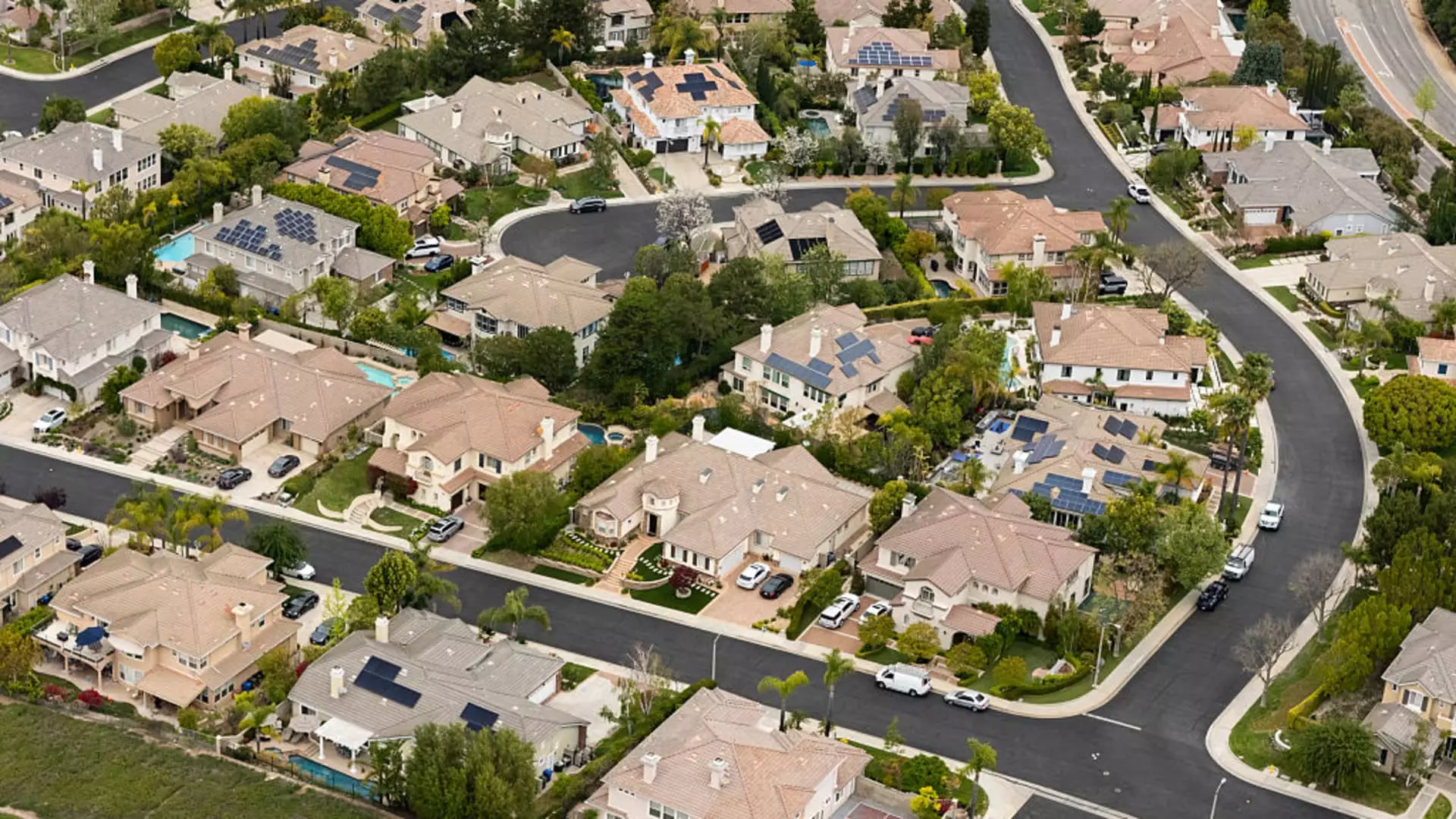The current housing market landscape is in a pitiful state, painted over with the brush of misplaced optimism but marred by deeply rooted issues. Following the initial pandemic surge, where an unprecedented demand streak collided with record-low mortgage rates, one might expect a balanced recovery. Instead, what we’ve witnessed is a cruel joke. Home prices nationally soared by an absurd 39% since March 2019, driven not by genuine economic growth but by a relentless supply crunch that leaves many potential homeowners grasping at straws. The S&P CoreLogic Case-Shiller Index aptly marks this trend, begging the question: Are we witnessing a recovery, or are we simply playing a cruel game with the dreams of millions?
Homebuyers at entry-level price tiers are continuing to suffer under the weight of inflated costs. While some markets show signs of easing, the most affordable segments remain under siege. In a sobering twist, lower and middle-class families are still feeling the brunt of a system rigged in favor of wealthier buyers, leading to a homogenized housing market that seems increasingly out of reach for everyday Americans.
A Disparity Fueled by Income Inequity
Imagine earning between $75,000 and $100,000 annually and finding hope in rising inventory levels. A meager increase from 20.8% of listings to 21.2% available within this income range offers little light in a dark tunnel. In contrast, in March 2019, nearly half of all active listings were affordable to these buyers. Fast forward to 2024, and it becomes painfully evident that the dream of homeownership is slipping further away. What was once a norm is now considered a luxury.
Although those earning more than $250,000 feast at the buffet of home listings—where at least 80% of properties are within their reach—those at the lower end, such as individuals making a mere $50,000, are left with options that are pitiful at best. Only 8.7% of homes are affordable to such earners, a stark decline from the relative accessibility observed just five years prior. The imbalance illustrates a stark reality: a considerable proportion of the population is being systematically excluded from a market that should cater to all socioeconomic strata.
The Geography of Discontent: A Country Divided
If one were to look horizontally across the nation, the picture only grows bleaker. National reports reveal promising data from regions like the Midwest and South, where balance somewhat exists. Here, cities such as Akron, Ohio, and Grand Rapids, Michigan, epitomize modest progress. Yet, to consider this a triumph would be naive; over 40% of the largest metropolitan areas are still grappling with severe affordability issues. Markets like Seattle and Washington, D.C., remain out of reach for those needing at least $150,000 annually just to access half the available listings—an obscene figure for a country plagued by wage stagnation.
Other traditionally overheated markets finally showcase a cooling effect, attracting eager eyes. More affordable homes in cities like Austin and San Francisco now exceed pre-pandemic levels, possibly hinting at a return to sanity. However, this change must be approached with caution, as it does not signify a wide-reaching victory. Instead, it highlights the need for a deeper examination into the systemic causes of this crisis—namely, decades of neglect to address affordability directly.
A Stagnant Response to Rapidly Evolving Needs
Homebuilders are diligently working to fill the widening void of affordable housing, yet their efforts seem thwarted by rising construction costs and stringent regulations. Who can blame them? With complex zoning laws and the ever-looming specter of tariffs and immigration debates, the very fabric of home construction in America is fraying. One cannot help but wonder: Is this truly a market driven by demand, or merely a system that has turned a blind eye to the needs of the many?
As we tread deeper into the reality of this housing problem, it becomes abundantly clear that merely introducing more affordable properties is not enough. There is an urgent need for layered policy interventions that prioritize sustainable growth without abandoning those at the lower rungs of the economic ladder. Until society acknowledges the harsh truths underscoring this crisis and pushes for significant change, the divides will deepen, and homeownership will remain a bitter dream for countless families across the nation.

